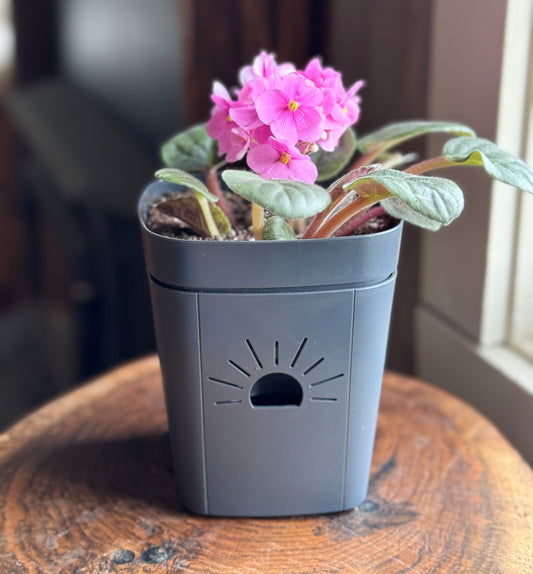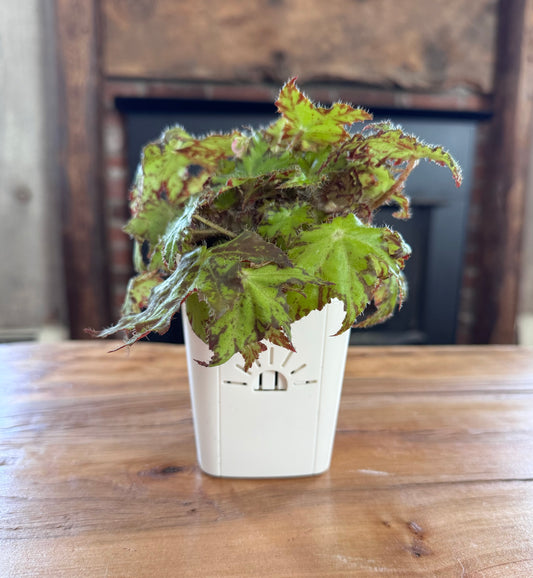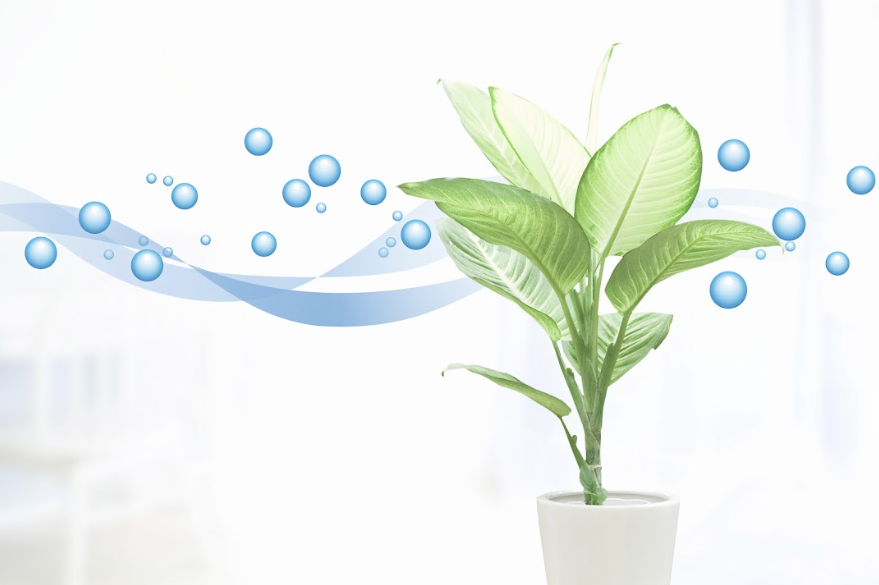Origins
Originally, the plant we know as Pothos was classified as Pothos aureus when it was first discovered in 1880. After a flower was observed in 1962, it was given the new name of Rhaphidophora aurea. Further examination of the flower was conducted, and similarities to Epipremnum pinnatum were found, causing it to be re-categorized under that genus. It wasn’t until other aspects of the plant, such as its leaves and growth patterns, were studied that it was re-classified as Epipremnum aureum.
Epipremnum is a type of flowering plant belonging to the Araceae family. It is native to China, the Himalayas, Southeast Asia, and Australia. These evergreen perennial vines usually climb using aerial roots and can reach heights of over 131 feet with leaves up to 10 feet long. When grown in a container, however, their size is much more reduced. It is commonly known as Pothos, or devil’s ivy, depending on the species, and is often kept as a houseplant in temperate climates. The young leaves of the plant are typically bright green with irregular yellow or white patches.
Epipremnum is thought to be a very old genus of plants. Seeds of Epipremnum crassum were found in Denmark and date back to the Miocene 12-14 million years ago.
Light
Requirements
Epipremnum is an excellent option for beginner gardeners! This hardy plant can thrive in a variety of lighting conditions inside and outside your home. It prefers bright, filtered light that will cause its leaves to have more yellow variegation. However, it cannot tolerate full direct sunlight or complete darkness.
If you plan on keeping this plant outdoors during the summer months, be sure to provide some shade, so it doesn’t get overexposed to too much sun. When bringing Epipremnum indoors, make sure it has access to enough natural light from windows and other sources. If placed too far away from any light source, it will suffer significantly diminished health over time. With proper care and maintenance, these plants can last many years and bring lots of life into your home environment!
Genus Summary
| GENUS | Epipremnum |
| COMMON NAMES | Golden Pothos, Devil's Ivy. |
| LIGHT | Bright, indirect light. Tolerant of lower light conditions |
| WATER SCHEDULE | Naked Root = 21 days Conventional Planter, allow to dry between waterings and then thoroughly soak. |
| WATER REQUIREMENTS | Keep the soil evenly moist but not soggy. |
| HUMIDITY | Average. 50 percent or greater. |
| TEMPERATURE | Average. 60-80°F. Never below 50°F. |
| FEEDING | 1x month |
| TOXICITY | Every part of an Epipremum is toxic to animals and humans. |
| PESTS | Rarely spider mites or mealybugs |
| DISEASES | Fungal and bacterial infections from overwatering are the two main killers of indoor Epiprenmum plants. |
| POT | A shallow pot with excellent drainage and aeration |
| SOIL | Average indoor potting mix |
| FERTILIZER | 20-20-20 monthly in growing season. |
| PROPAGATION | By Stem cuttings rooted in water |
| PRUNING | Prune long stems to encourage bushier growth. Train upward for larger leaves. |
| SIZE | 2- 10 feet indoors. |
Water Requirements
When growing your Pothos in a Naked Root planter, follow a 21-day watering schedule.
During the growing months of spring and summer, you should water your pothos plant frequently but not excessively. The roots are relatively shallow and can be easily over-watered if too much is added at once. Instead, let the soil dry until the pot is light as a feather, and then thoroughly drench.
You don’t need to worry about using special or filtered water – normal tap water will do just fine! Just make sure to let it warm up to room temperature first so that you don’t shock the root system with a sudden change in temperature.
Humidity
Epipremnum plants thrive in average humidity levels of 50 percent or greater but are also very adaptable to different humidity levels. Therefore, if you find your plant is not doing well in a low-humidity environment, try increasing the moisture level by misting the leaves regularly with either distilled water or filtered water. Additionally, placing your Epipremnum near other houseplants can help increase localized humidity as they transpire and evaporate more moisture into the air. Finally, consider investing in a humidifier for larger rooms or areas where this beloved plant lives – it will make all the difference!
Temperature
Epipremnum plants thrive in average indoor temperatures of 60-80°F and should not be exposed to temperatures below 50° at any time. In the summer, they can be placed outside, but care should be taken to ensure that direct afternoon sunlight does not burn the leaves. If possible, the plant should be moved so it is shaded during periods of intensely hot weather.
Toxicity
Every part of an Epipremum is toxic. They contain trichosclereids, which are sharp cells meant to protect the plant from being eaten by herbivores. They also contain raphides, which are crystals of calcium carbonate and calcium oxide that are shaped like needles. These ingredients cause a lot of mouth pain and burning, so keep them away from pets and children.
Pests and Diseases
Pest and disease issues on Pothos plants are rare. They are generally only susceptible to problems when they are under stress from improper growing conditions.
Fungal and bacterial infections from overwatering are the two main killers of indoor Epiprenmum plants.
In addition to fungal and bacterial problems, Golden Pothos can also be prone to both spider mites and mealy bugs. Spider mites are small arachnids that feed on plant sap, leaving yellow or white spots on the leaves of the plant. Mealybugs are small insects coated in a white wax-like substance that feeds off of the juices of plants. They tend to congregate around new growth areas such as buds and nodes, sucking out all the moisture they need.
To prevent your Pothos from getting these pests, you should make sure it is not overwatered or sitting in wet soil for too long – this encourages root rot which can weaken a plant significantly, making it more prone to an infestation.
Pot
Epiprenmum is not a deeply rooted plant, so even a fully mature plant may only need a 12-inch deep container. Since Pothos prefer to dry out almost completely, a pot with root zone aeration and a bottom watering reservoir for a deep soak would be ideal.
Soil
A standard houseplant potting mix with good drainage works perfectly. It should be well draining but not overly so. Too much moisture can lead to root rot and other plant issues. Avoid using cactus-type soils, which often have little or no organic content, since this could be damaging to the plant’s roots over time. Instead, choose potting mixes specifically designed for indoor plants that contain organic matter, such as peat moss or coconut coir. Additionally, you may want to add some perlite or vermiculite for better aeration and drainage if needed – just make sure not to use too much!
Fertilizer
Epipremnum is a hardy plant that can thrive without fertilizer for quite some time. If you want to encourage plentiful growth and leafy foliage, consider using a 20-20-20 fertilizer mix monthly. Feed the plant during the warmer months, and don’t fertilize during the wintertime. If the plant’s growth has stalled, try increasing the frequency of fertilizing to every two or three weeks instead.
Propagation
When propagating Pothos, it’s important to make sure you clip the vines directly under a leaf node. This is where new roots will form and start growing. After clipping the vine, remove any low-lying leaves and place the cutting in water.
You don’t need to worry about trimming or pruning your plant during propagation because when you cut off a section of the vine, it will automatically create a new shoot in that area! Air layering can also be used as an alternative method for propagating golden Pothos, but most gardeners prefer using the water method due to how quickly it produces results.
Pruning
When pruning your Epipremnum, remove any dead or dying leaves, as well as stems that have become too long for the desired look of your plant. Regularly trimming back overgrown vines will help keep a more controlled shape and structure while also preventing them from becoming sparse, with foliage only at the very tips. Furthermore, Epipremnums are incredibly fast-growing plants, so don’t be afraid to cut back heavily if necessary – it won’t take long for new shoots and leaves to begin sprouting again!
10 Striking Varieties and Cultivars
All varieties of Pothos are grown for their exquisite foliage. They are low-maintenance plants that thrive in average indoor conditions and are resistant to pests and disease. Here are a few of our favorite varieties.
Epipremnum aureum – Golden Pothos – Epipremnum aureum, otherwise known as Golden Pothos or Devil’s Ivy, is an incredibly popular and easy-to-care-for houseplant. It is recognized by its heart-shaped leaves that are streaked with golden-yellow variegation. This species is a particularly vigorous grower and, if given something to climb on, can eventually produce huge leaves that may measure up to two or three feet long in very mature plants.
Epipremnum aureum ‘Marble Queen’ – Epipremnum aureum ‘Marble Queen’ is an absolutely stunning variety of Pothos with vibrant true green leaves and stems that are streaked in white. This highly variegated plant will grow more slowly than other varieties of Pothos, so be sure to give it more light than usual and avoid locations that get too dark. Placing your Marble Queen in bright but indirect sunlight should ensure optimal growth conditions for this gorgeous foliage plant.
Epipremnum aureum ‘Neon’ – Epipremnum aureum ‘Neon’ is one of the most colorful and stunning houseplants out there. Its bright chartreuse leaves are sure to draw attention wherever it is placed. The newer leaves will be brighter in color, while they will deepen as they mature. For a more vibrant look, place this plant in an area with ample light, such as near a south-facing window or on top of a furniture piece close to the window. However, be aware that too much direct sunlight can wash out its colors and darken its hue, so ensure you find the correct balance for your space! If placed correctly in front of a south-facing window, it may even start producing dark green variegated blotches on its leaves – adding another layer of depth and complexity to this beautiful plant!
Epipremnum aureum ‘HANSOTI14’ – Epipremnum aureum ‘HANSOTI14’ was named after the creator and is otherwise known as the Happy Leaf Pothos and the Manjula Pothos. It is an attractive houseplant with unique and eye-catching variegation. Its leaves are much wider than those of Marble Queen, nearly round in shape, and come to a teardrop point at the tip. The lush foliage features yellow, green, silver, and cream tones that can bring a pop of color to any indoor space. As well as being beautiful, this variety is also fast-growing. It can reach lengths of up to 40 feet if given enough room!
Epipremnum aureum ‘EFM12’ – Commonly known as the Pearls and Jade Pothos, this is what botanists call a ‘sport’ of Marble Queen. It has leaves that are smaller and grow a bit slower than some other Pothos. The leaves are worth the wait, though! They are bright green in the middle with white variegation near the edges for a mesmerizing look. They like to grow in a thick bushy shape, and trimming the ends of the vines every once in a while can help them attain a shrubbier appearance.
Epipremnum pinnatum ‘Cebu Blue’ – The blue-green leaves of this Epipremnum are gorgeous. They are much narrower and pointer than most other Pothos varieties, giving the leaves an arrowhead appearance that looks lovely cascading over a hanging basket. The leaves have mono-color, raised veins that make the leaves look quilted. In bright light, the leaves can get a silvery sheen. In lower light, the leaves will be even bluer.
Epipremnum aureum ‘Jade’ – If you have low light conditions, this is the Pothos for you. The pure green leaves of this Epipremnum can grow in the most dismal of lighting conditions. All plants need some light to grow, but even a north-facing window will satisfy a Jade Pothos. If you want a vibrant plant with vigorous growth, provide bright, indirect light, and you will be rewarded with masses of heart-shaped leaves on vines that reach ten feet long or more.
Epipremnum aureum ‘Snow Queen’ – The variegation on this Pothos is stunning. Each green leaf is covered in so much snowy white that the leaves only appear to have small flecks of green showing through. This massive amount of white does cause the plant to photosynthesize and grow more slowly, so patience is needed. Less photosynthesis also means less shade tolerance, so provide bright, indirect light. If you have an east-facing window, that would be ideal. It will also be happy 36 inches away from a south-facing window.
Epipremnum aureum ‘Asaoka Second’ – This plant is commonly referred to as Global Green Pothos. It is a unique variety with neon green leaves that are mottled and flecked with darker green patches toward the edges. This variegation makes it look like the leaves have a large lime-green patch in the middle, haloed by darker green. Lovely! It has twining branches that love to grow upwards. If you give it something to attach to, the leaves will reach 8 inches wide or more.
Epipremnum aureum ‘Glacier’ – This beautiful Pothos has muted olive green leaves with white variegation at the edges. The leaves have raised veins that make them look rippled and quilted. This is a slower-growing variety because of all that white, but patience is worth the wait. The leaves tend to stay smaller on this variety, but they grow in massive quantities along the vine.
Summary of Epipremnum Plant Care
Plant your new Epipremnum in a shallow container with plenty of airflow and place it in bright, indirect sunlight. Allow the soil to dry out between waterings and feed once per month in the growing season. Use average potting soil and provide average humidity, and your Pothos will grow up to ten feet long indoors!





 Verified Buyer
Verified Buyer









